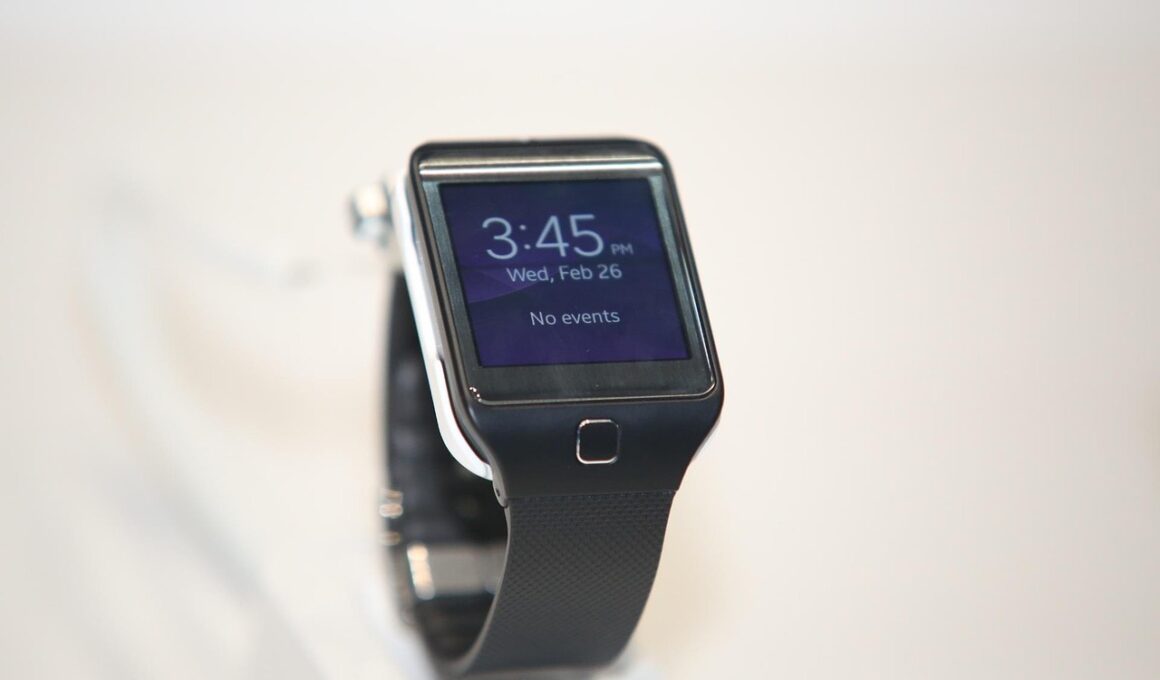Wearable Recovery Devices: Features to Look for in 2024
As fitness enthusiasts increasingly incorporate technology into their routines, wearable recovery devices are gaining prominence. In 2024, these devices are expected to focus on offering more personalized and effective experiences. One critical feature to look for is sensor accuracy, which directly impacts how well a device can assess recovery. Advanced sensors can monitor physiological signals, tracking metrics like heart rate variability and muscle tension. Users need analytics that provide insights on their recovery status. Another important aspect is the integration of artificial intelligence algorithms that can analyze collected data over time to suggest personalized recovery plans. Many devices now feature vibration or heat therapy to promote faster recovery by reducing muscle stiffness and improving circulation. Additionally, real-time feedback can enhance training sessions by alerting users about their recovery needs. Ensure the device you choose offers seamless syncing with apps that track progress while providing actionable insights. Also, consider features such as battery life, water resistance, and comfort. These elements can greatly enhance the user experience, making recovery more efficient and enjoyable.
Another aspect to consider when choosing wearable recovery devices is the battery life. Advanced technologies demand significant power, so a long-lasting battery is vital, especially for athletes on-the-go. Search for devices that can last multiple days on a single charge, ensuring uninterrupted use during training camps or travel. Furthermore, a quick charging functionality can also be beneficial. Most modern devices emphasize waterproof and sweatproof functionalities, safeguarding inner workings against moisture damage. This means they can withstand tough workouts and remain functional under varying conditions. Ensure your desired device meets these environmental standards. In 2024, users should also prioritize devices offering compatibility with other fitness gadgets and smart platforms. Integration allows for seamless data aggregation and comprehensive analysis of health metrics across numerous devices. Another significant consideration is the comfort of wearables. A device that’s comfortable enhances user engagement, encouraging regular use. Look for adjustable straps and lightweight designs that are easy to wear for extended periods. Opt for materials that adapt to the skin while reducing irritation and chafing. Ultimately, these features contribute positively to the overall recovery experience, allowing athletes to maximize their potential.
Customization and Personalization Features
Customization is becoming a cornerstone in wearable recovery devices for 2024. The more personalized your device is, the better it can cater to your specific needs. So, look for wearables that allow users to set personal recovery goals based on their fitness level or sport-specific demands. Features like custom alerts can remind users to engage in recovery activities, ensuring they don’t skip essential phases. Some devices come equipped with tailored recovery programs based on individual metrics like age, weight, and fitness goals, offering a unique touch to the user experience. Additionally, certain models now provide recommendations based on performance history, further enhancing their utility. The user interface must also be intuitive and user-friendly; a complicated interface might deter consistent use. Furthermore, devices that allow for software updates often adapt to future technologies and methodologies, extending their lifespan. With changing fitness trends, personalization will continue to evolve, making it crucial to choose devices that showcase flexibility. This adaptability will ensure that users can achieve optimal recovery, aligning with their constantly changing goals and physical demands.
Moreover, wearable devices that incorporate educational resources provide immense value to users. These resources can offer insights into effective recovery techniques, such as stretching routines and mobility exercises, which can further enhance user experiences. Such instructions guide individuals through proper practices, maximizing recovery results while ensuring safety during execution. Integration with educational platforms can also help in building knowledge about physiological responses to training, enabling users to make informed decisions. Check if your device syncs with health apps that offer training suggestions to further enhance this aspect. Furthermore, some wearables now feature community connectivity options, allowing users to share their achievements and recovery routines with peers. This social aspect can motivate individuals to keep consistent with their recovery strategies. Additionally, compatibility with social platforms can create accountability among users. Those interested in holistic approaches may seek devices that also track mental health metrics. Cognitive wellness is essential in recovery, making it necessary to monitor factors like stress levels and sleep quality. Devices that encompass both physical and mental recovery support a balanced fitness regimen.
Data Sharing and Privacy Considerations
In today’s digital age, data privacy is a significant concern for fitness device users. With recovery wearables collecting sensitive health information, it’s essential to assess how companies handle data sharing. Research the privacy policies of the brands you consider to ensure they meet robust privacy standards. Understanding whether your data is anonymized or shared with third parties can influence your decision. Additionally, wearable devices should offer users the option to control what data is collected and how it can be used. For individuals resistant to sharing personal data, prioritize devices that have minimal data collection features, providing basic functionality without compromising privacy. Engaging with brands that are transparent about their practices can establish trust and security. Moreover, consider wearables that offer offline functionalities, allowing users to log recovery activities without needing to connect to the internet. This facilitates use in data-sensitive environments where online connectivity may be limited. Ultimately, ensuring your data is safeguarded while enjoying various features should be a priority when searching for the ideal wearable recovery device.
Furthermore, a comprehensive recovery wearable should be able to integrate with various platforms. Interoperability among devices enhances user experiences by aggregating diverse health and fitness data in one place. Review whether the wearable can connect to popular health ecosystems like Apple Health, Google Fit, or specific training apps widely used by athletes. This integration can provide a holistic view of your health metrics, making tracking more effective. A fully integrated device can also help identify patterns in recovery, helping users tailor their routines more effectively. Users should also assess how device updates are handled and whether the manufacturer regularly pushes software improvements or introduces new recovery protocols. Ongoing updates can bridge the gap between your device’s capabilities and evolving recovery methodologies. In addition, support for customer service is crucial. When issues arise, how manufacturers respond can make a significant difference in user satisfaction. Opt for brands known for responsive customer support, enhancing the longevity and usability of your wearable recovery device.
Future Prospects in Wearable Recovery Technology
Looking towards the future, wearable recovery technology is set for dynamic advancements. Manufacturers are investing in cutting-edge technologies like adaptive AI and advanced biometrics. As these features become mainstream, wearables will provide ever-more accurate assessments of recovery needs. Incorporating virtual training sessions into these devices allows users to learn from experts while integrating optimal recovery practices. Furthermore, the development of non-invasive sensors to monitor metabolic rates is on the horizon, revolutionizing monitoring techniques. Devices equipped to track hydration levels and electrolyte balance will play a vital role in optimizing recovery post-exercise. The implications of this technology could fundamentally change athlete recovery techniques, providing immediate feedback and suggestions. Moreover, the use of gamification in recovery applications is predicted to increase user engagement significantly. Gamifying recovery tasks can provide rewards for completing activities, making the often arduous recovery process more enjoyable. As the fitness landscape evolves, wearables will transition from being merely tracking devices into holistic health partners, ensuring their relevance and utility for those dedicated to improving their performance and well-being.
In conclusion, while selecting wearable recovery devices for 2024, keeping an eye on features like personalization, data privacy, and device compatibility can enhance usability and effectiveness. As technology continues to evolve, users should remain informed about trends and advancements, ensuring they choose devices that align with their goals and values. Strive for wearables that provide a seamless interface, robust analytical capabilities, and effective recovery suggestions. Investing time in research before making a purchase ensures you find the best options available on the market. Take note of company policies regarding user data; manufacturers committed to protecting privacy build a sense of trust with their users, facilitating a more satisfying experience. With an increasingly competitive market, brands that excel at merging technology with user needs will thrive. The future holds exciting potential for wearable recovery devices, with innovations poised to redefine the landscape of fitness and health. Ultimately, individuals should approach their pursuit of recovery with the mindset of incorporating technology as a supportive partner in their journey. With the right device, optimal recovery and performance can be achieved.


